If you've ever stared at a shelf full of BBQ powders and wondered why they all smell slightly different but somehow taste similar, you're not alone. Whether you're hosting backyard cookouts or running a professional smokehouse, choosing the right BBQ powder can feel like navigating a spice maze blindfolded.
This guide is specifically designed for intermediate grillers who've mastered basic techniques but want to understand the science and artistry behind perfect BBQ powder application. We'll move beyond simple recipes to explore how molecular interactions between spices and meat proteins create unforgettable flavors. So fire up your grill, grab a cold drink, and let's get scientific (and spicy).
Table of Contents
- What Exactly is BBQ Powder?
- The Secret Sauce: Key Ingredients in BBQ Powders
- Regional Flavors: A Taste Tour of American BBQ Styles
- How to Use BBQ Powder Like a Pro
- DIY BBQ Powder: Mix Your Own Magic
- Common Mistakes (and How to Avoid Them)
- BBQ Powder Showdown: Store-Bought vs. Homemade
- Global Spice Science: A Cross-Cultural Analysis
- Frequently Asked Questions
- Conclusion
What Exactly is BBQ Powder?

At its core, BBQ powder (also known as dry rub) is a mixture of spices designed to enhance the natural flavors of meats during grilling or smoking. Unlike marinades that use liquid bases, dry rubs are applied directly to the surface of the meat before cooking, creating a delicious crust or "bark."
But here's the scientific twist — while most BBQ powders contain salt, pepper, paprika, garlic, and onion powders, the variations are endless because different spice compounds interact uniquely with meat proteins at specific temperatures. Different regions of the U.S. have their own signature blends, influenced by historical immigration patterns and local agricultural availability.
So, what makes a great BBQ powder? It's all about chemical harmony — a perfect interaction between volatile compounds in spices and amino acids in meat. Let's dig into the components that make that possible.
The Secret Sauce: Key Ingredients in BBQ Powders
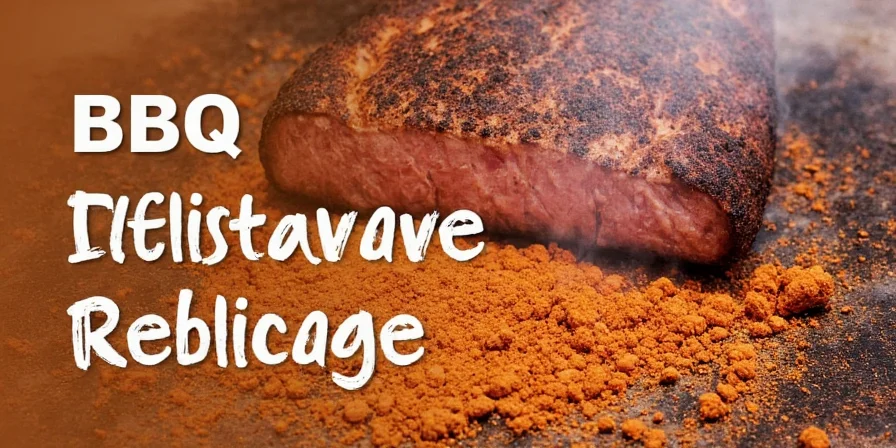
The foundation of any good BBQ powder comes down to the building blocks and their chemical interactions. Here's a breakdown of common ingredients and what they bring to the table:
| Ingredient | Flavor Profile | Role in BBQ Powder |
|---|---|---|
| Salt | Salty, savory | Enhances other flavors, helps form a crust through protein denaturation |
| Black Pepper | Peppery, earthy | Adds heat and depth through piperine compound interaction |
| Paprika | Smoky, sweet | Colorful base with mild heat from capsaicinoids |
| Brown Sugar | Sweet, caramel-like | Counteracts salt, adds texture through Maillard reaction |
| Garlic Powder | Umami, pungent | Rich background note from allicin compounds |
| Onion Powder | Sharp, savory | Boosts overall savoriness through sulfur compounds |
| Cayenne Pepper | Hot, biting | Kicks up the heat level with high capsaicin content |
| Mustard Powder | Spicy, tangy | Helps bind spices to meat through emulsification |
| Cumin | Earthy, nutty | Adds Mexican-inspired flair with distinctive terpene compounds |
While these ingredients are standard, understanding their chemical properties allows for more intentional blending. Some innovative recipes call for compounds that interact specifically with meat proteins - like enzymatic papain from papaya for tenderizing, or tannins from coffee that bind with proteins to create complex flavor compounds during smoking.
Regional Flavors: A Taste Tour of American BBQ Styles
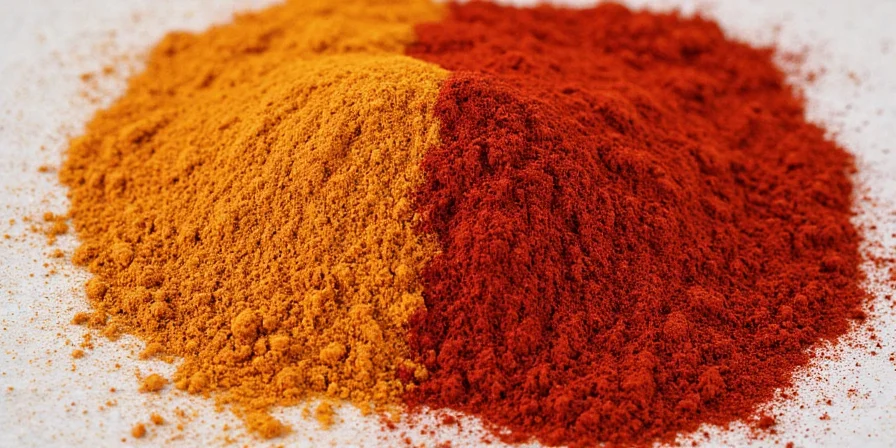
BBQ powder isn't one-size-fits-all — it's a reflection of regional traditions, climate, and cultural influences. Let's take a road trip across America and explore how each region's spice science creates distinctive flavors:
- Texas: All about the beef. Rubs tend to be simple — coarse salt, black pepper, and maybe a hint of garlic. The minimalism allows the Maillard reaction on high-fat brisket to shine without competing flavors.
- Kansas City: Sweet and smoky with brown sugar, paprika, and molasses-based sauces. The higher sugar content caramelizes beautifully on ribs at typical KC smoking temperatures (225-250°F).
- Carolina (East vs. West): Eastern Carolina uses vinegar-based rubs with red pepper flakes; the acidity helps break down tough pork shoulder. Western Carolina (Lexington style) leans sweeter with ketchup, brown sugar, and sometimes mustard — creating complex flavor compounds through acid-sugar reactions.
- Tennessee: Dry rub reigns in Memphis, especially for ribs. Paprika, cayenne, garlic, and cumin create bold, zesty flavors that stand up to the region's long smoking times.
- Alabama: Known for white BBQ sauce made with mayo and horseradish, so the rub tends to be lighter — more black pepper and less sugar to avoid burning during shorter cook times.
Want to impress your guests at the next cookout? Try matching your rub to the meat's protein structure and cooking method. It's like molecular pairing — understanding how specific compounds interact with different meat types.
How to Use BBQ Powder Like a Pro
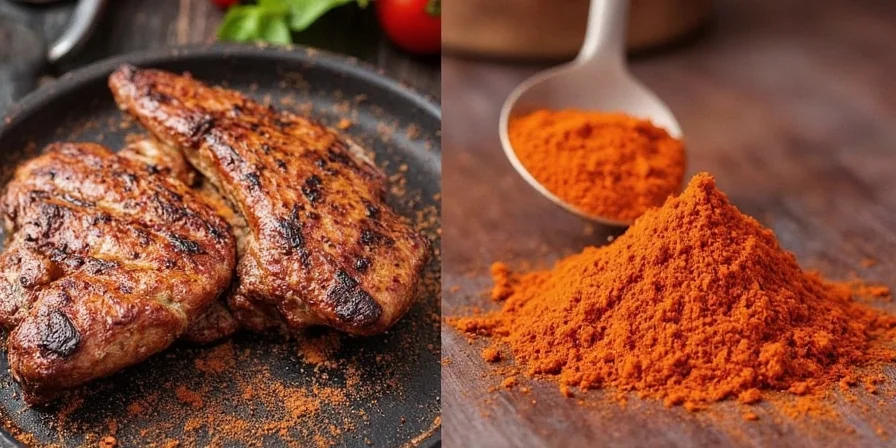
You've got your favorite BBQ powder — now what? Understanding the science of adhesion and protein interaction will take your results to professional levels. Here's how to apply it like a true pitmaster:
- Clean and dry the meat: Moisture prevents adhesion through surface tension; pat it down with paper towels to maximize spice contact.
- Use a binder: Brush on a light coating of oil, mustard, or Worcestershire sauce to help the spices stick through emulsification principles.
- Rub generously — and evenly: Sprinkle liberally on all sides and massage it in. Don't forget the edges where flavor concentration occurs!
- Let it rest: For best results, refrigerate the seasoned meat for at least an hour — preferably overnight. This allows time for salt to penetrate and begin protein denaturation.
- Don't overdo it: Too much rub can create an impermeable layer that prevents proper bark formation. A thin, even layer is ideal for optimal Maillard reaction.
- Adjust based on cooking method: Low-and-slow smokers need more sugar (for caramelization at lower temps), while hot-and-fast grills benefit from more salt and pepper which withstand higher heat.
And here's the scientific tip: If you're using a wet sauce later, hold back on the sugar in your rub — too much sweetness can burn through pyrolysis and turn bitter when exposed to high heat.
DIY BBQ Powder: Mix Your Own Magic
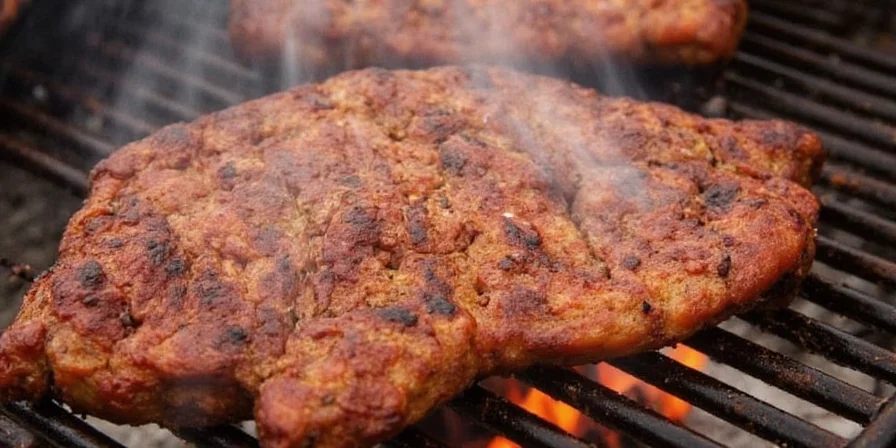
Why buy when you can blend? Making your own BBQ powder gives you total control over flavor chemistry, intensity, and ingredients. Plus, it's cost-effective and customizable.
Here's a basic starting point for a balanced all-purpose BBQ powder with scientific precision:
- 3 tbsp smoked paprika (provides color and mild heat)
- 2 tbsp brown sugar (for caramelization)
- 1 tbsp kosher salt (for protein interaction)
- 1 tbsp black pepper (for piperine content)
- 1 tsp garlic powder (for allicin compounds)
- 1 tsp onion powder (for sulfur compounds)
- ½ tsp cayenne pepper (optional for capsaicin heat)
Mix everything in a bowl until well combined. Store in an airtight container away from sunlight to preserve volatile compounds. And remember — you can always tweak the ratios to suit your taste and cooking method!
Try adding a teaspoon of ground coffee for rich, earthy notes that bind with proteins, or a pinch of cinnamon for warmth through cinnamaldehyde compounds. Want something bold and spicy? Add chipotle powder or crushed red pepper flakes. The flavor chemistry possibilities are endless.
Common Mistakes (and How to Avoid Them)
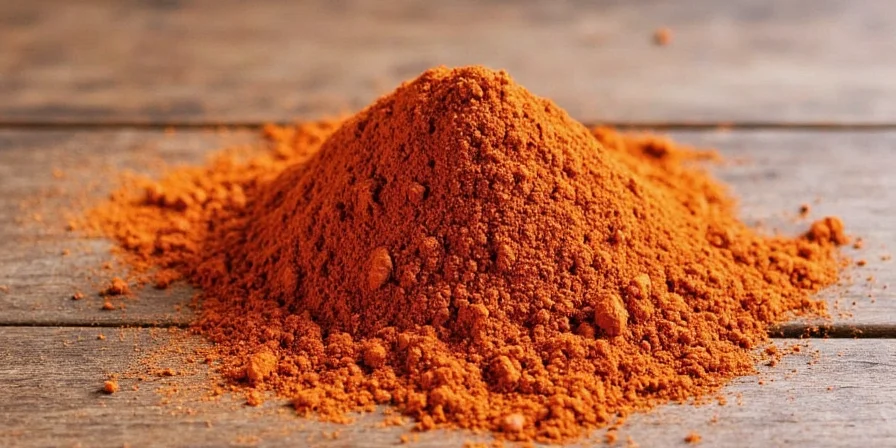
We've all been there — you season your ribs like a mad scientist and end up with a plate of regret. To save you from culinary shame, here are five scientifically-backed mistakes to avoid:
- Too much salt: Salt enhances flavor but can easily dominate through osmosis. Start small and adjust gradually based on meat thickness.
- Neglecting the binder: Without something to facilitate emulsification, your rub just sits there. Always use a light binder like oil or mustard for proper adhesion.
- Rubbing unevenly: Spotty coverage leads to inconsistent flavor development. Be thorough, especially on ribs and chicken where surface area affects protein denaturation.
- Using old spices: Spice blends lose volatile compounds over time. Keep your rubs fresh for maximum flavor impact — most spices lose potency after 6-12 months.
- Overthinking the blend: You don't need 20 ingredients to impress. Sometimes simplicity wins the day through focused flavor compound interaction.
Remember, the goal of a BBQ powder is to elevate the meat's natural compounds, not drown them. Less is often more — unless you're going for dramatic flavor layering (we won't judge).
BBQ Powder Showdown: Store-Bought vs. Homemade
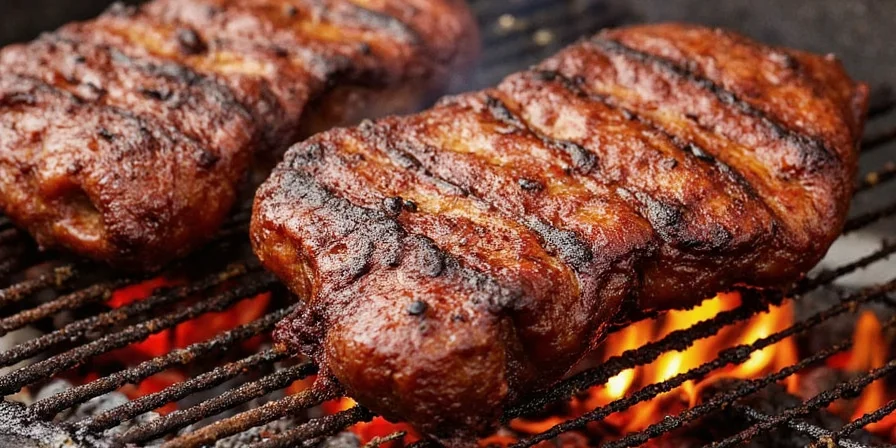
When it comes to convenience vs. customization, which side of the fence should you be on? Let's break it down with scientific precision:
| Factor | Store-Bought | Homemade |
|---|---|---|
| Time Required | Instant access | 5-10 minutes prep |
| Cost per Use | Average $4-$8/jar | As low as $1-$2/jar |
| Customization | Limited options | Endless flavor chemistry possibilities |
| Flavor Control | Fixed blend | Totally adjustable for specific meats and methods |
| Shelf Life | Up to 2 years (often with preservatives) | About 6-12 months (fresh volatile compounds) |
For everyday grilling, store-bought powders work fine. But if you want to really dial in your flavor chemistry or impress your friends with signature blends, homemade is where it's at. Plus, making your own gives you complete control over the molecular interactions happening on your meat — and who doesn't love that?
Global Spice Science: A Cross-Cultural Analysis

Here's a perspective you won't find in typical BBQ guides: American BBQ powders are part of a global spice science continuum. Let's examine how different cultural traditions influence modern BBQ rubs:
West African spice traditions brought by enslaved peoples heavily influenced Southern American BBQ, introducing techniques for using smoked peppers and complex spice layering. The use of mustard in Carolina BBQ likely traces back to German immigrants who settled in the region.
Interestingly, the Maillard reaction that creates BBQ's prized bark is nearly identical to the chemical process that creates the wok hei (breath of the wok) in Chinese stir-frying. Both rely on high heat interacting with proteins and sugars, though the specific spice compounds differ.
Modern molecular gastronomy reveals that many traditional spice combinations across cultures follow similar scientific principles. The capsaicin in cayenne, allicin in garlic, and piperine in black pepper all enhance flavor perception through different biological pathways - a pattern seen in spice blends worldwide.
By understanding these universal principles, you can innovate beyond traditional regional boundaries while respecting their scientific foundations.
Frequently Asked Questions
Can I use BBQ powder on vegetables?
Absolutely! Sprinkle on grilled eggplant, portobello mushrooms, or zucchini for extra depth. The Maillard reaction works on vegetable proteins too, though at slightly higher temperatures than meat.
Should I marinate before applying rub?
Not necessary. Rubs work best on dry surfaces for optimal adhesion. If using a light marinade, make sure to pat the meat completely dry first to prevent steaming instead of searing.
Is there a universal BBQ powder?
No universal blend exists, but a mix of smoked paprika, salt, pepper, garlic powder, and brown sugar creates a versatile base. True universality depends on understanding the protein structure of your meat and adjusting ratios accordingly.
Do I need to remove the rub before cooking?
No! Leave it on — that's where all the flavor compounds are hiding. The rub forms a protective layer that helps create the signature bark through chemical reactions during cooking.
How does humidity affect BBQ powder performance?
High humidity can cause clumping and reduce adhesion. In humid conditions, increase the salt content slightly (which draws out moisture) or apply the rub just before cooking rather than allowing extended resting time.
Can I use fresh spices instead of dried in my rub?
Fresh spices contain water that can steam rather than sear meat. For dry rubs, always use dried spices which have concentrated volatile compounds essential for proper bark formation and flavor penetration.
Conclusion
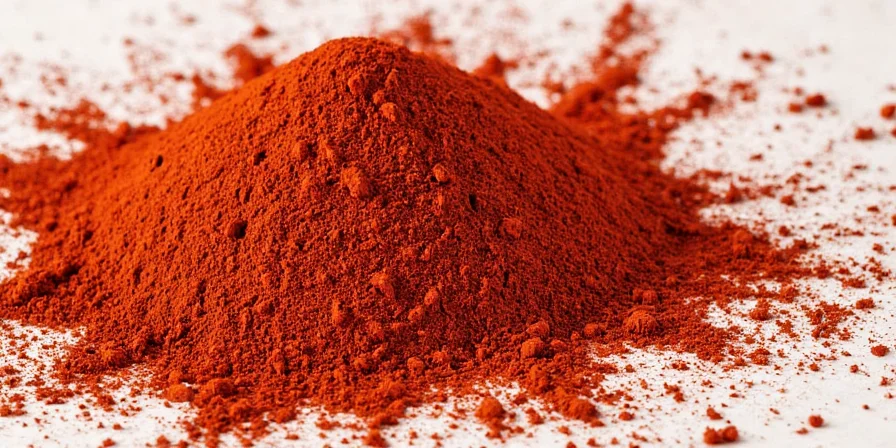
Whether you're a weekend warrior firing up the Weber or a competitive pitmaster chasing rib glory, understanding the science behind BBQ powder can elevate your game dramatically.
From molecular interactions between spice compounds and meat proteins to regional traditions rooted in historical spice trade routes, there's no shortage of ways to make your flavor pop. Remember, the best BBQ powder is the one tailored to your specific meat, cooking method, and desired chemical reactions — so don't be afraid to experiment with precision.
So the next time you reach for that jar of mystery spices, think beyond the label. Because with the right understanding of flavor chemistry, a sprinkle can spark joy, a dash can deliver drama, and a full rub can transform meat into molecular magic.
Now get out there and start spicing — scientifically!

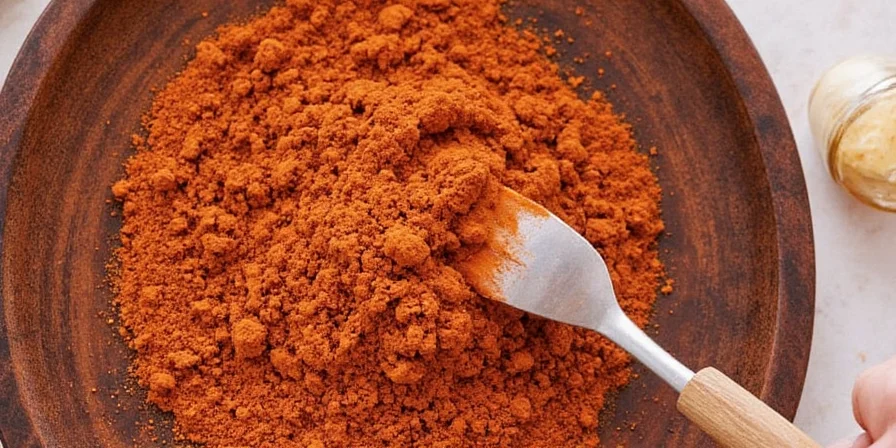









 浙公网安备
33010002000092号
浙公网安备
33010002000092号 浙B2-20120091-4
浙B2-20120091-4